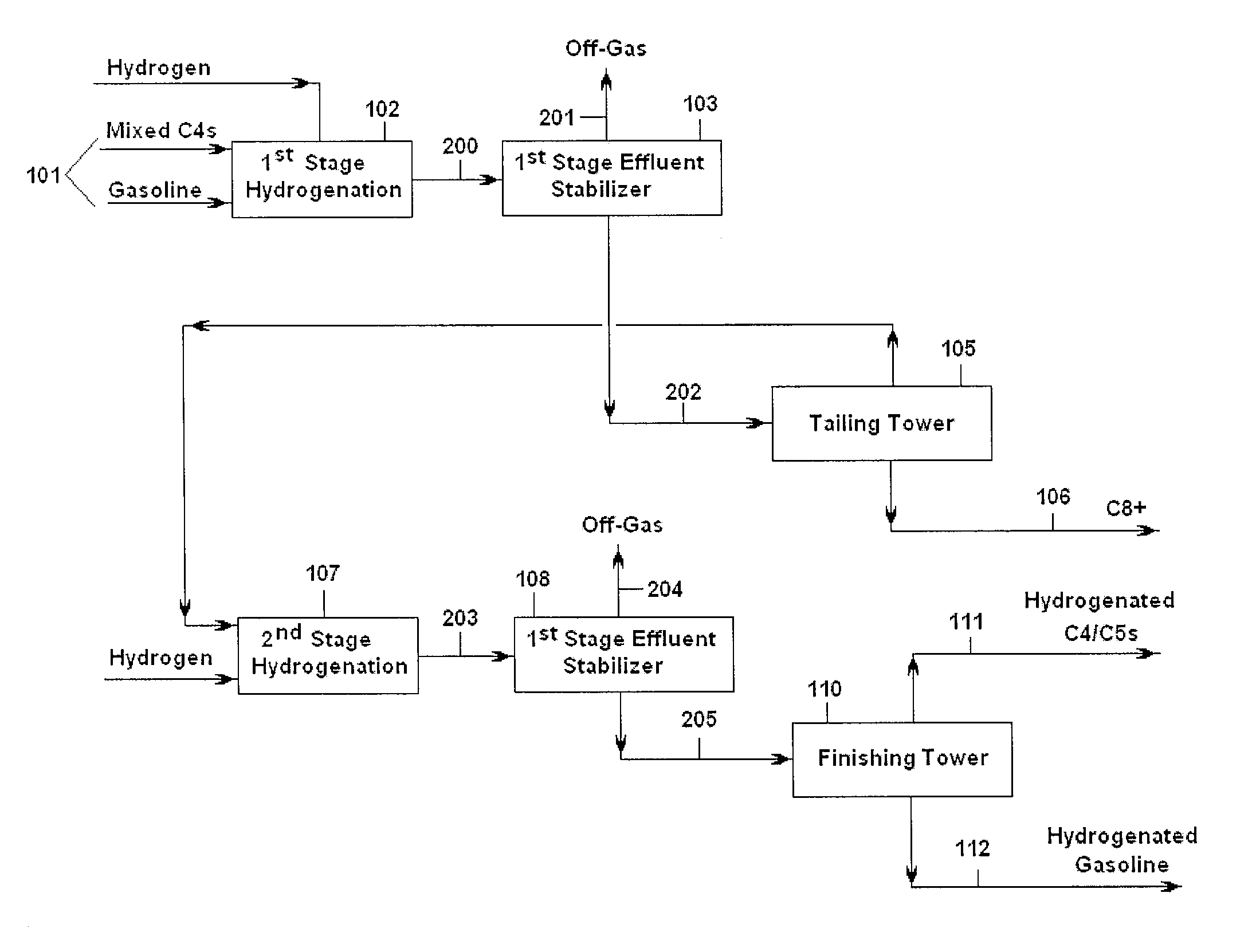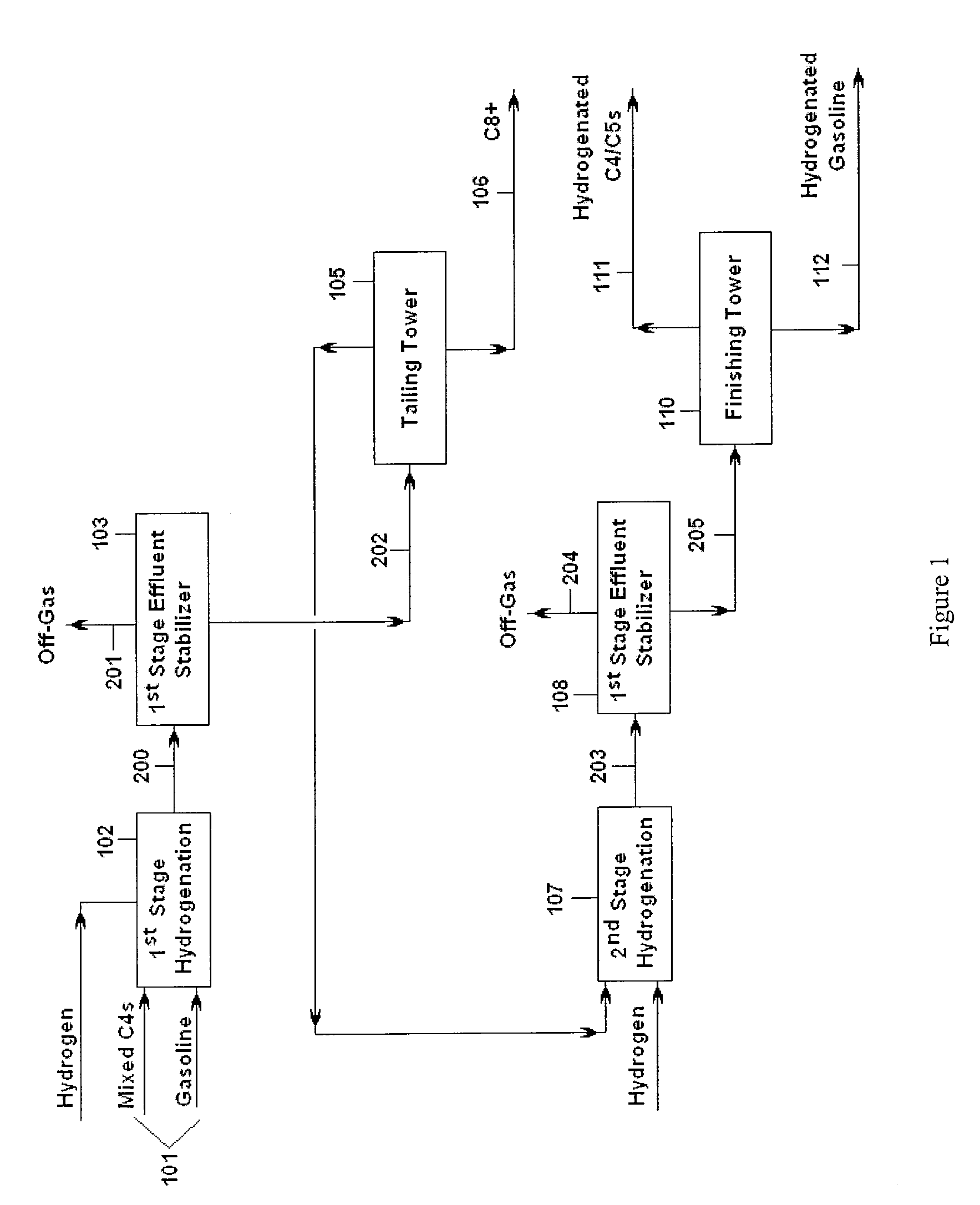Method for co-hydrogenating light and heavy hydrocarbons
- Summary
- Abstract
- Description
- Claims
- Application Information
AI Technical Summary
Benefits of technology
Problems solved by technology
Method used
Image
Examples
Embodiment Construction
[0021]Hydrocarbons may be acyclic, cyclic or aromatic in structure. A major source of hydrocarbons is often referred to as pyrolysis liquids. Hydrocarbons are often contained in the effluent of a hydrocarbon conversion method in which the feed hydrocarbons are cracked, either thermally or catalytically (or both), thereby forming paraffins, olefins, diolefins and a variety of aromatic compounds. After thermal or catalytic cracking, raw hydrocarbon products are formed, including raw light hydrocarbons (e.g., C4 hydrocarbons) and raw heavy hydrocarbons (e.g., gasolines and / or C5+ hydrocarbons). In the practice of the present invention, particularly suitable feedstocks for the hydrogenation reactor include gasoline and C4 streams from thermal and catalytic cracking processes, distillates from cokers and coal gasification. The subject method, however, may be applied to any feed stream comprising combined light and heavy hydrocarbons.
[0022]The feedstocks useful in the practice of the pres...
PUM
 Login to View More
Login to View More Abstract
Description
Claims
Application Information
 Login to View More
Login to View More - Generate Ideas
- Intellectual Property
- Life Sciences
- Materials
- Tech Scout
- Unparalleled Data Quality
- Higher Quality Content
- 60% Fewer Hallucinations
Browse by: Latest US Patents, China's latest patents, Technical Efficacy Thesaurus, Application Domain, Technology Topic, Popular Technical Reports.
© 2025 PatSnap. All rights reserved.Legal|Privacy policy|Modern Slavery Act Transparency Statement|Sitemap|About US| Contact US: help@patsnap.com


